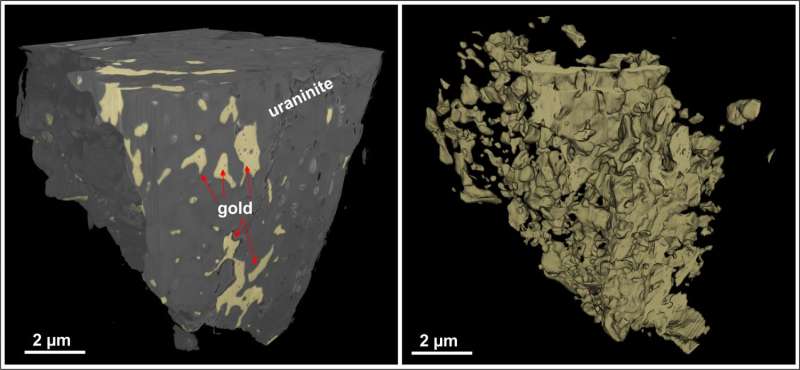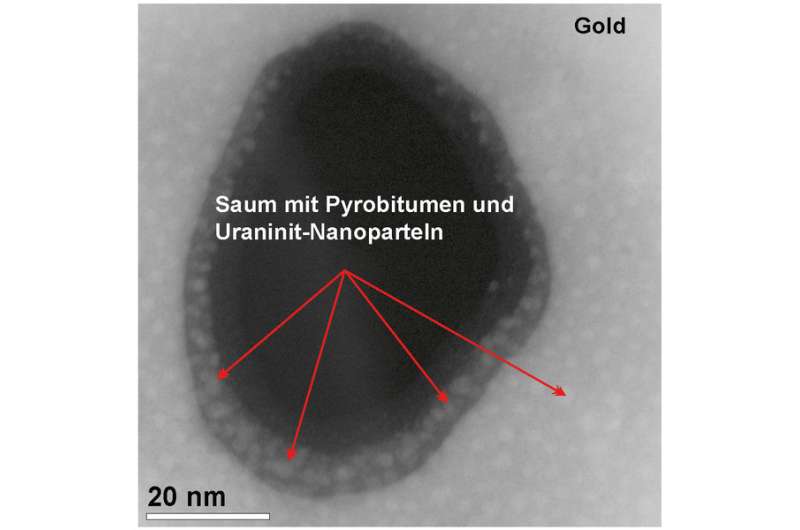The formation of gold deposits in South Africa

At a first glance, the Witwatersrand basin, the largest known gold resource on our planet, is not automatically related to ocean research. However, in its 3 billion years old geological history, the Witwatersrand basin in South Africa has been covered by seawater, but experienced also episodes of drying out, flooding and erosion by rivers and the repeated coverage by seawater. In 1852, the English prospector J.H. Davis discovered the first gold in the Witwatersrand, leading to the South African gold rush and the discovery of much more gold deposits within the basin. Although the Witwatersrand has been subject for decades of research, the genesis of gold and uranium ore is still unclear.
A group of scientists from Canada and the GEOMAR Helmholtz Centre of Ocean Research Kiel, successfully unravelled some mechanisms of the ore-forming process using complex analytical techniques. The results were recently published in the scientific journal Precambrian Research.
In this study, the scientists analysed samples from the Witwatersrand ore deposits with high-resolution scanning- and transmission-electron microscopes, and the processed their data using novel 2D and 3D software. "We were able to find out that fossil oil, that has been formed by organic matter derived from the first living organisms on Earth, mobilized uranium in the basin. Uraninite nanoparticles flocculated in the oil and formed uranium ore", explains Dr. Sebastian Fuchs from the GEOMAR, the first author of the study. "Hot hydrothermal fluids, similar to those fluids that we find today in modern seafloor Black Smoker systems, transported dissolved gold and formed oil-in-water emulsions at the site of the deposits. The oil droplets in the hydrothermal fluids initiated the efficient chemical precipitation of native gold and the formation of very complex-structured gold and uranium ore."
Using high-resolution imaging techniques, the researchers were able to visualize a to date unknown ore-forming process, in which migrating oil plays the dominant role in the distribution and concentration of metals. "With our method we have been able to show remnants of fossil oil entrapped in gold for the very first time" says Dr. Sebastian Fuchs.
"We are surprised to see such an intimate spatial relationship between the oil products and the metals", reports Dr. Fuchs. "We hope that our study gives new impulses to industry and science to explore new mineral deposits. Perhaps it is possible at some day to extract gold and other metals from mined crude oil".
With the methods used, it is now possible to study not only ore particles on the ocean floor in the range of millimetre to nanometre, but also the smallest fossils and living organisms, such as micro-organisms. "We are curious about what else we might discover on the ocean floor in the future", Fuchs concludes.

More information: Sebastian H.J. Fuchs et al, Gold and uranium concentration by interaction of immiscible fluids (hydrothermal and hydrocarbon) in the Carbon Leader Reef, Witwatersrand Supergroup, South Africa, Precambrian Research (2017). DOI: 10.1016/j.precamres.2017.03.007
Provided by Helmholtz Association of German Research Centres



















